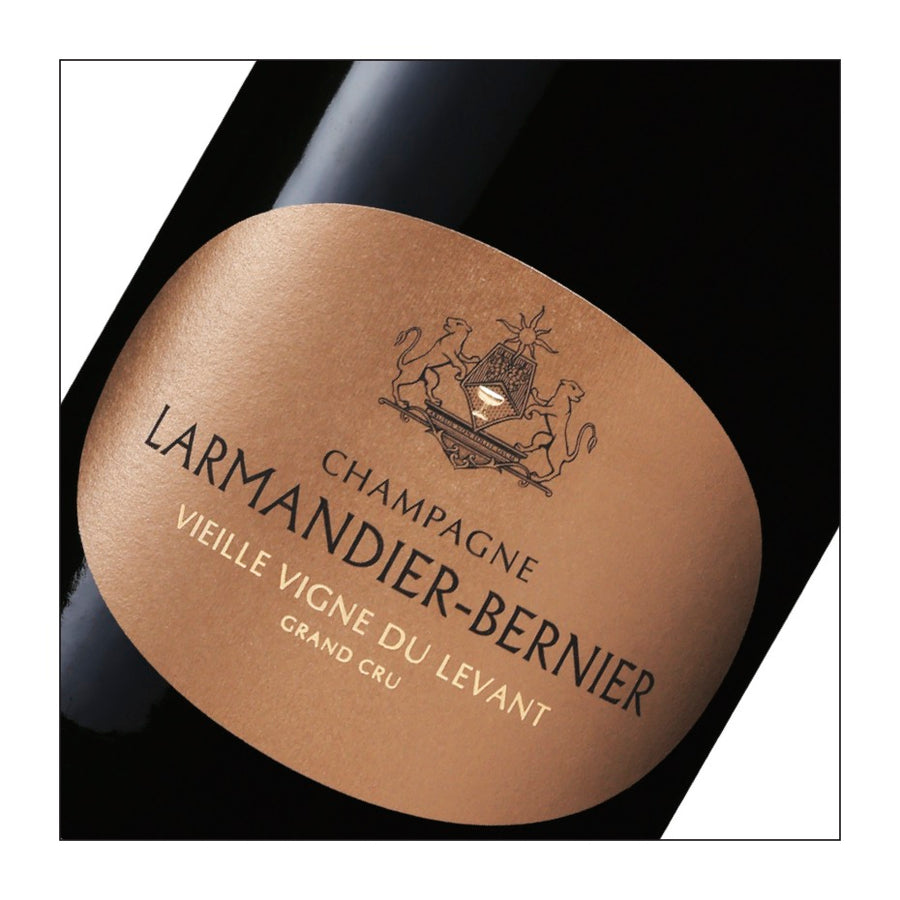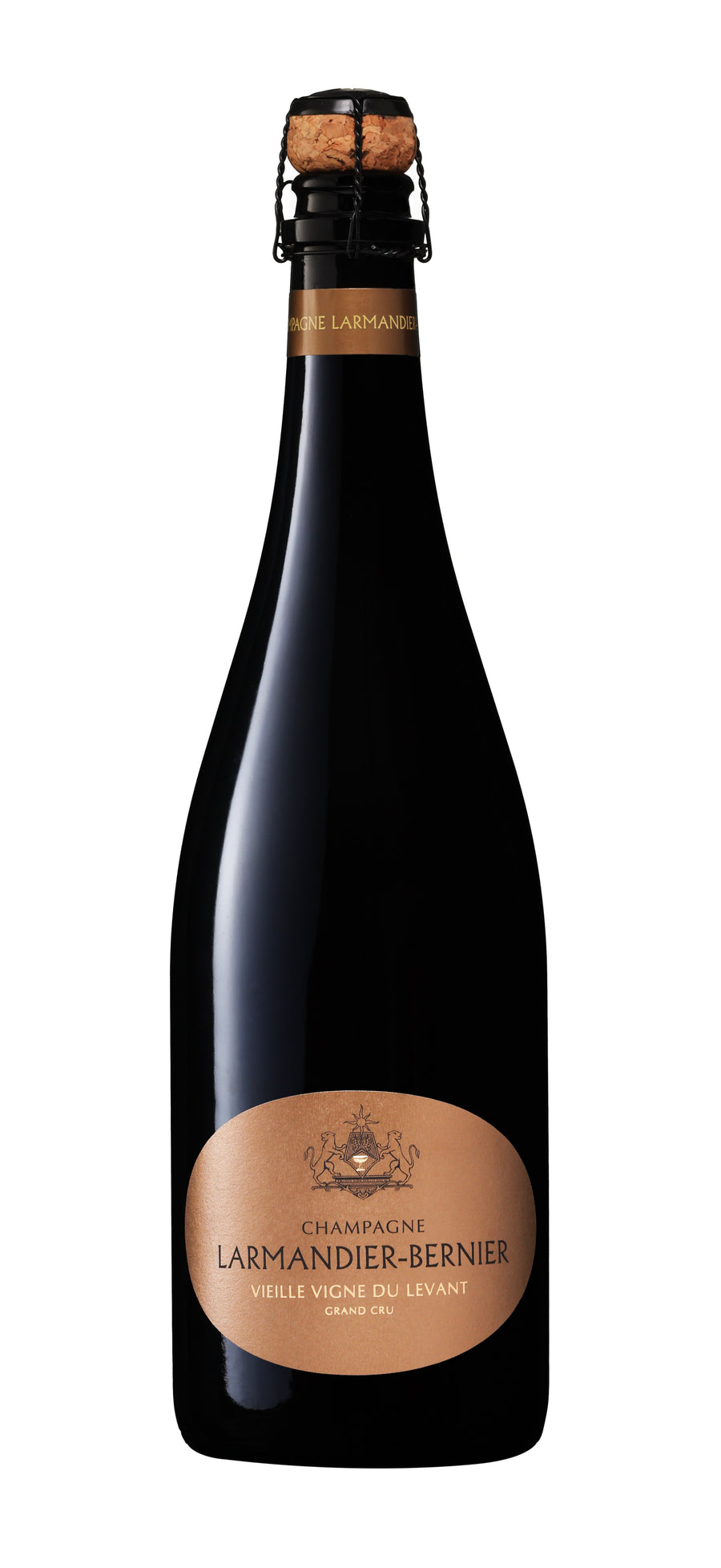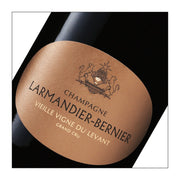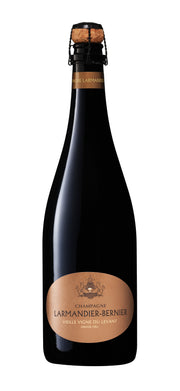BESPLATNA DOSTAVA ZA SVE PORUDŽBINE PREKO 60 €
REGISTRUJTE SE ZA POSEBNE PONUDE
GREAT SUMMER SAVINGS
Countdown has ended
ABV:
Larmandier-Bernier, Blanc de Blanc Extra Brut "Vieille Vigne du Levant" Grand Cru 2015 (750 ml)
- Regular Price
- €195,00
- Sale Price
- €195,00
- Regular Price
- Unit price
- ( per )
500+ 5 star Trustpilot Reviews ★★★★★
-
Product Info
95 poena - The Wine Advocate
Larmandier-Bernier se danas smatra jednim od najvažnijih i najuglednijih imena u svijetu šampanjca. I porodica Larmandier i porodica Bernier imaju dugu istoriju u ovoj regiji, koja datira još od Francuske revolucije, ali je šampanjerija Larmandier-Bernier osnovana tek 1971. godine brakom Philippea Larmandiera i Elisabeth Bernier. Danas ovom malom kućom upravljaju Pierre i Sophie Larmandier zajedno sa sinom Arthurom, a posjeduju nešto manje od 18 hektara u nekim od najcjenjenijih sela u regiji Côte des Blancs: Cramant, Chouilly, Oger i Avize (sve Grand Cru), kao i u vrhunskom Premier Cru selu Vertus.
Porodica je 1999. godine prešla na potpuno biodinamičko vinogradarstvo. Njihovi vinogradi su 90% zasađeni Chardonnay-em, 9% Pinot Noirom i 1% Pinot Grijem. Kako čokoti dostižu gotovo 50 godina starosti, Larmandierovi praktikuju konzervativniji pristup prinosima nego što je to danas uobičajeno u Šampanji. Ne boje se zrelosti, već teže balansu između šećera i kiselina, što smatraju pravim svetim gralom vinogradarstva. Takođe vjeruju da terroir dolazi najviše do izražaja uz minimalan nivo dosiranja, i da se takva odluka ne donosi u podrumu, već zaslužuje u vinogradu. Kao rezultat, šampanjci Larmandier-Bernier nikada ne dobijaju više od četiri grama šećera po litru, što ih sve svrstava u kategoriju Extra Brut.
Stari čokoti u vinogradu Levant okrenuti su ka jugoistoku i uživaju u izuzetnom terroiru. Stari su između 60 i preko 85 godina. Njihovo korijenje prodire duboko u zemlju, a raznolikost starih klonova dodatno doprinosi složenosti vina. Kao i čitav vinograd imanja, i ovi čokoti se obrađuju na prirodan način, kako bi se postigla savršena zrelost.
Chardonnay iz ovog vinograda donosi volumen, bogatstvo i izraženu mineralnost. Vino se postepeno otvara u čaši, oslobađajući arome svježeg koštuničavog voća, tek pečenog hljeba, bijelog cvijeća, puterastog peciva i čistog meda. Vino je punog tijela, prozračno i precizno, sa slatkom voćnom jezgrom, živahnim kiselinama i prodornom, električnom završnicom. Ovo je šampanjac koji vrijedi kušati zbog njegovih vlastitih kvaliteta – kao aperitiv, uz jela od peradi sa smrčcima, ili uz kremasta jela s kojima se odlično nosi.
Treba mu dati vremena da se otvori, kako bi se u potpunosti osjetila njegova snaga, kompleksnost i izuzetna dužina. Naravno, može se i čuvati za dodatno odležavanje – ako to više volite.
95 points - The Wine Advocate
Larmandier-Bernier is now perceived as one of the most important and respected names in Champagne. Both the Larmandier and Bernier families have had an extensive history in the region, dating back to the French revolution, but it was not until the marriage of Philippe Larmandier and Elisabeth Bernier in 1971 that Champagne Larmandier-Bernier was established. The small house today is directed by Pierre and Sophie Larmandier, along with their son Arthur, and own just under eighteen hectares in some of the finest villages on the Côte des Blancs: Cramant, Chouilly, Oger and Avize (all Grand Crus), as well as in the fine premier cru village of Vertus.
The family converted to full biodynamic farming in 1999. Their holdings are comprised of ninety percent Chardonnay, nine percent Pinot Noir, and one percent Pinot Gris. As their vines near 50 years of age, the Larmandiers practice a more conservative approach to yields than is currently customary in the Champagne region. They do not fear ripeness, but seek maturity of sugars and acidity in search of balance - the holy grail in grape growing. They further believe that the terroir is expressed best with very minimal levels of dosage, and that this is not a decision that is made in the cellar, but rather, earned in the vineyard. Consequently, Larmandier-Bernier wines never receive more than four grams per liter of sugar. This puts all of Larmandier-Bernier's Champagnes in the category of Extra Brut.
-
The old vines of the Levant face south-east and benefit from an exceptional terroir. They are between 60 and more than 85 years old. Their roots go down deep, and the diversity of the old vine stocks contributes to the complexity of the wine. As is the case for the estate’s entire vineyard, they are cultivated naturally so as to obtain perfect ripeness.
his is a Champagne which should be tasted for its own qualities as an aperitif, to accompany poultry with morels, and this cuvée will happily stand its ground with dishes cooked in cream. It must be allowed time to open up, so that you can appreciate its power, complexity and exceptional length. Naturally, it can also be kept for further maturation, if that's how you like it.
-
Name:
-
Brand:
Berba Wine Empire
FOR THE DISCERNING MIXOLOGIST
Meticulously chosen for their exceptional quality & versatility in crafting the perfect cocktail. Elevate your mixology skills with ingredients trusted by professional bartenders worldwide.
BERRY NICE
Shop our carefully curated collection
of flavored Vodkas!
SUMMER SIPS
Up your cocktail game with our incredible selection of spirits!




